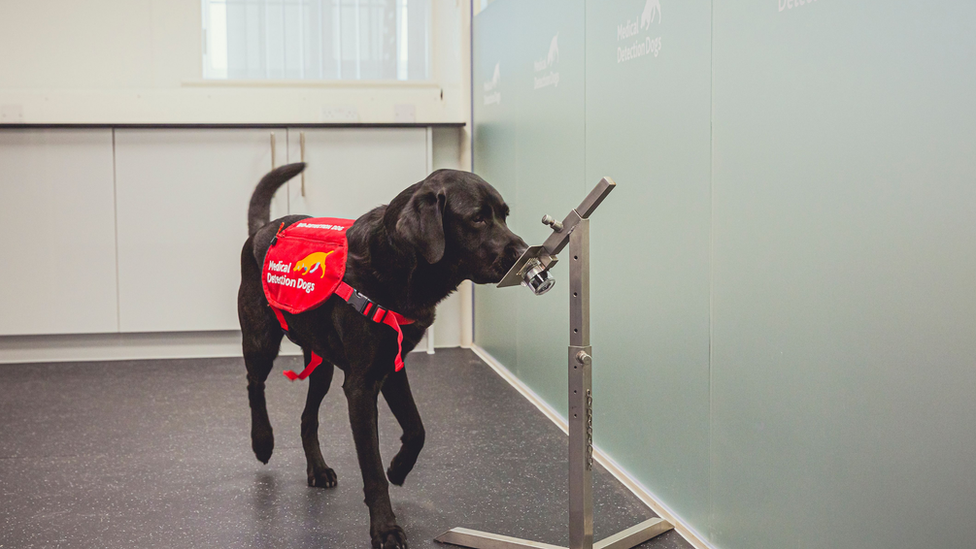Coronavirus: How dogs can be used to help slow coronavirus
- Published
- comments

This dog is smelling a covid sample!
A new study has shown that sniffer dogs can detect coronavirus in humans in super-quick time and could be used alongside other methods to help spot the disease when there are no symptoms
Dogs can have up to 100,000 times the smelling ability of humans and have long been used by emergency services to help find trapped people or spot smugglers.
But recent research has shown dogs - particularly breeds like spaniels and retrievers - can detect the unique scents of some diseases including cancer and malaria.
As part of the current trial, six dogs were trained to recognise the smell produced by people with Covid-19 using worn socks, face masks and t-shirts of various materials.
The study has a 94% success rate so far and it is that hoped that dogs could be used in certain situations to make re-opening society easier.
How did the study work?
This is how the dogs will be trained to try and detect any coronavirus scent
The dogs were trained by the London School of Hygiene & Tropical Medicine and they used six dogs and 3,500 odour samples.
Six dogs then put their noses to the test to sniff out the virus.
As part of a trial, dogs were trained to recognise a distinctive odour produced by people with the virus, but that is undetectable to the human nose.
Members of the public and NHS staff provided odour samples to the study but neither the dogs nor researchers knew if the sample was a positive or a negative one.
The dogs would then sniff the samples and let the researchers know if they smelt the virus.
The dogs were able to sniff out the disease even when it was caused by different variants, and when the person had no symptoms or only had very low levels of the virus in their system.
During the study the dogs picked up nearly 9 out of 10 (88%) of coronavirus cases, but they also got it wrong in 14% of cases - saying they were positive when they were actually negative.
So the research team does not recommend dogs alone are used to sniff out positive cases.
Where does the study go from here?
These are the dogs that were used in the study!
The results mean some infections will be missed, and some people will be told they have the virus when they don't.
So the research team does not recommend dogs are used to sniff out positive cases by themselves.
But they believe the dogs could be used as well as more conventional tests. They say dog screening, followed by swab testing, will pick up 91% of infections.
The real potential advantage, though, is speed: even the quickest tests take 15 minutes to show a result, while dogs can sniff out the disease in seconds. Two dogs could screen 300 people in half an hour, researchers say.
So even though the results weren't perfect, its still hoped the dogs can help, particularly in airports and other busy places like train stations, where there isn't much screening.
Researchers say the next stage of their study is to trial it in real-world situations.
- Published16 May 2020
- Published23 March 2019
